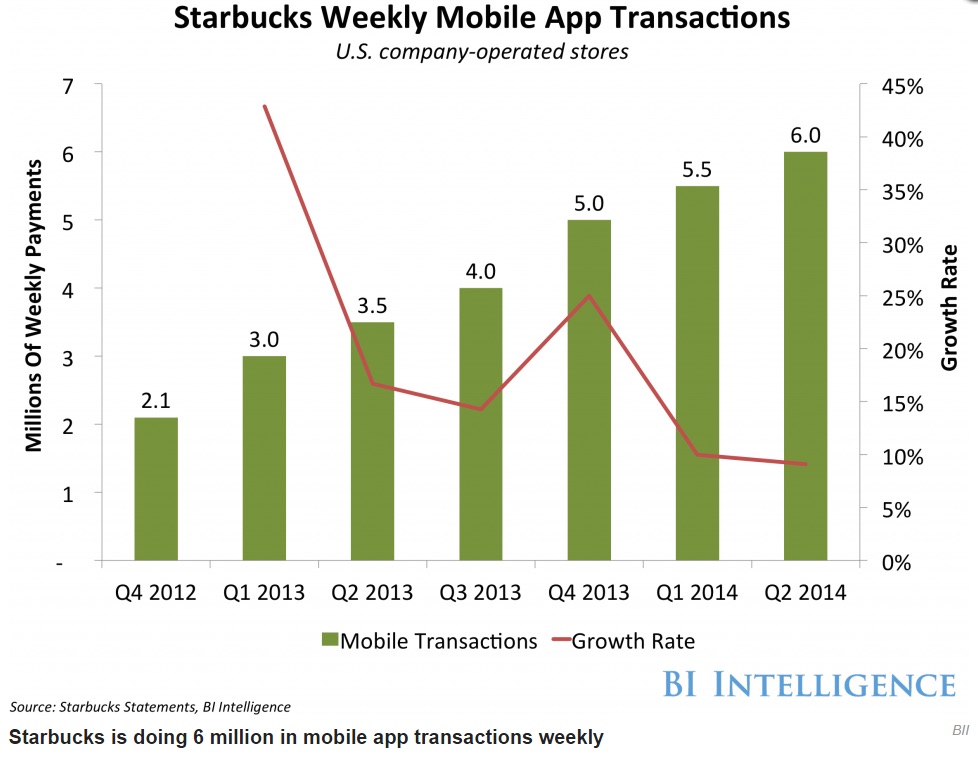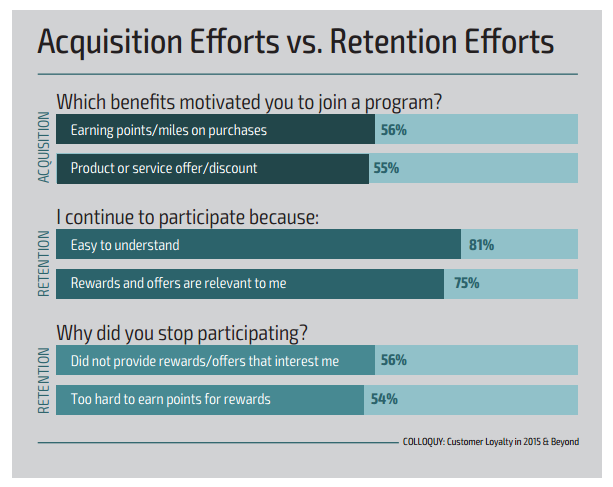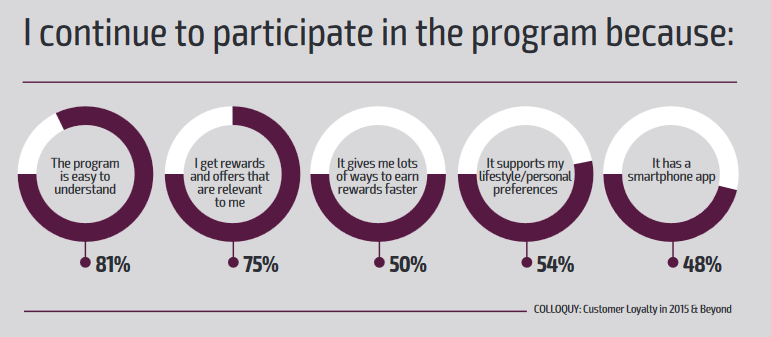Since the very first brand loyalty program was launched (by Betty Crocker in 1929 in case you're curious), rewards services like these have continually be used to not only entice customers but to re-market to them in a way that strengthens their affinity to the brand. But the advent of the Internet and mobile shopping has changed all of that. Are loyalty programs still effective in today's on-demand marketplace? Or are they something that only major online stores can afford to launch? Let's take a closer look:
Loyalty at Every Touchpoint
One need look no further for an excellent example of a rewards program than My Starbucks Rewards. And although it isn't devoted solely to e-commerce, mobile transactions still make up a significant (and growing) portion of its sales – even when growth itself is staggering or even falling.

The fact that the app goes above and beyond traditional “card only” loyalty programs and is raking in over 6 million transactions a week on its own is a testament to the power of loyalty. And it doesn't stop at the app. Starbucks has integrated customer rewards everywhere its name is found, from kiosks to grocery stores to the exclusivity of the “Gold Card” – a reward in itself when a member accumulates enough loyalty points.
People who frequent Starbucks love showing off their custom-crafted drinks, so the Gold Card is just as much a way for them to save as it is for them to show off their dedication to the brand as a status symbol.
With this in mind, however, you may be thinking “I'm just an e-commerce site. I don't have an app and my products aren't on grocery store shelves. What can I do with a loyalty program? I don't have all these touchpoints.”
Oh, but you do.
Just not the same kinds.
Your email marketing efforts. Customer service help desk. Live chat and remarketing offers are all examples of potential touchpoints you can use to help foster customer loyalty. Here's how to do it.
Focus on Long-Term Benefits, Not Just Short-Term Gains
The best loyalty programs reward customers for their purchases over the long term. According to a 2015 survey from Colloquy, marketers were asked about how they split their acquisition versus retention efforts. Nearly half of those surveyed split their investments evenly, while 34% indicated they would spend more in acquisition and 18% would spend more on retention.
Yet research results from Invesp Consulting show that existing customers are 50% more likely to try new products and spend 31% more compared to new customers. That means the vast majority of your customer loyalty efforts should ideally be directed toward existing customers, not chasing down new members.
Give Them All the Right Reasons to Stay
Ever wondered why customers join your rewards program in the first place? And what makes them stay? Better yet, what makes them leave? The Colloquy report reveals some insightful details:
Why do customers join loyalty programs? Why do they leave?
What causes customers to continue to participate in programs?
What's more, they add that companies often market “the program and its benefits the same way for existing loyalty members and potential ones”, which the company calls “a misfire”, since those consumers define value differently. Acquisition efforts should focus on “transactional value, emphasizing discounts, points and sign-up bonuses, for example. Retention efforts, meanwhile, should focus on emotional value, with an emphasis on topics such as the time to earn rewards, program simplicity and alignment with consumers' values and interests.”
The way to put this into practice in your own e-commerce business is to shake up how you market the loyalty program based on where the consumer is in their journey with your company. Colloquy even goes so far as to encourage business owners to seriously think about “fir[ing] your worst customers” while “over-invest[ing] in your best customers”. They further spur businesses to spend more money on retention rather than acquisition, and integrate everything into the loyalty program – discounts, promotions, pricing, and even inventory management.
The end result should not be that the loyalty program is a standalone offshoot of the company's customer retention efforts, but rather a fully integrated part of it.
Broaden Your Loyalty Reach with Partnerships
When you see certain answers from customers on why they stay with the program, namely to earn (better) rewards faster, you might question the economics of such a choice. You can't very well sustain giving away huge chunks of inventory. What's more, with so many businesses offering rewards programs, all of them start to be lumped together in a sort of “me too cacophony” where everyone looks and sounds the same.
One way to differentiate this, as numerous surveys and case studies have noted, is through the use of strategic partnerships. From earning air miles on credit cards to free Starbucks when using Lyft, large-scale points-building loyalty programs aren't just for big businesses. In fact, as the chart below shows, not only can they entice customers to spend more and shop more frequently at member stores, but they also have a significant impact on the revenues of the original (referring) source.
Partnerships, co-branded products and coalitions help overcome the customer complaint that they weren't earning rewards fast enough – while still remaining economically feasible
The Bottom Line on Loyalty Programs
Although the traditional method of loyalty programs with cards and product box-tops has fallen out of favor in recent years, the impact of the loyalty program itself remains strong and is continuing to grow. Now, more than ever, customers are looking to social networks, personalized messages, partner programs and mobile apps as a way to get more of the products they enjoy most from the brands they love.
This presents the perfect opportunity for e-commerce businesses to do what they do best – seize on opportunities that would slow down more traditional retail outlets. When you make a loyalty program encouraging, enticing and economical for customers, they'll reward you many times over with business, referrals and loyalty – things that no program alone can buy.
Now, we turn to you. Have you started a customer loyalty program for your e-commerce website? How is it working for you? Share your thoughts and comments on the process in the comments below and tell us about it!
About the Author: Sherice Jacob helps business owners improve website design and increase conversion rates through compelling copywriting, user-friendly design and smart analytics analysis. Learn more at iElectrify.com and download your free web copy tune-up and conversion checklist today! Follow @sherice on Twitter, LinkedIn or Google+ for more articles like this!



I read your blog it's very nice and very helpful, I learn something new every time from this website, Thanks for sharing this information with us. I am also a blogger i guide people on App and Software Development. You can visit my blog here Loyalty Program Software
ReplyDelete